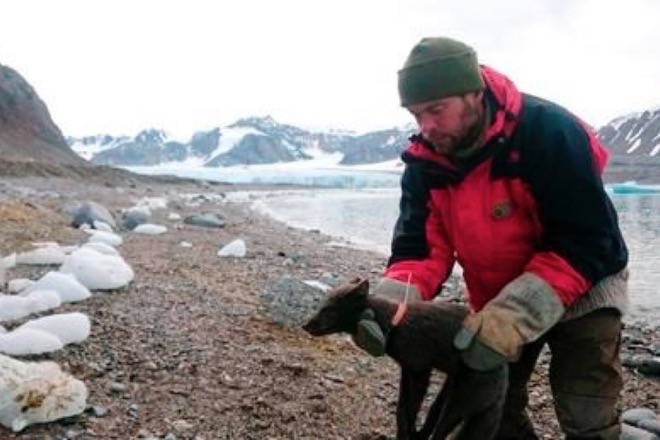An arctic fox walked more than 4,415 kilometres from northern Norway to Canadasa���ʴ�ý�s far north in four months, Norwegian researchers said.
The Norwegian Polar Institute reported the young female fox left her birth place on Norwaysa���ʴ�ý�s Svalbard archipelago on March 1, 2018 and reached Canadasa���ʴ�ý�s Ellesmere Island by way of Greenland on July 1, 2018.
The ground the small fox cumulatively covered over those four months was among the most ever recorded for an arctic fox seeking a place to settle down and breed, the institute said in a research article subtitled sa���ʴ�ý�One femalesa���ʴ�ý�s long run across sea ice.sa���ʴ�ý�
Institute scientists monitored the foxsa���ʴ�ý�s movements with a satellite tracking device they fitted her with in July 2017 near her native habitat by a glacier on Norwaysa���ʴ�ý�s Spitsbergen island. She stayed close to home then gradually ventured out until she left the island on March 26, 2018.
During the walk to Canada, the roughly two-year-old fox moved at an average rate of 46.3 kilometres per day, the Norwegian scientists said.
sa���ʴ�ý�The short span of time spent covering such a distance highlights the exceptional movement capacity of this small-sized carnivore species,sa���ʴ�ý� they said.
READ MORE:
The distance between the foxsa���ʴ�ý�s natal den and where she settled on Ellesmere Island was 1,789 kilometres if travelled in a straight line, according to the institute.
The sea ice allows Norwaysa���ʴ�ý�s arctic foxes to reach Greenland and then North America, though itsa���ʴ�ý�s not known why they leave their birth places in search of places to breed, the researchers said.
The animals, which have thick fur to survive cold environments and live to about age four, subsist on fish, marine birds and lemmings.
The Associated Press
Like us on and follow us on


